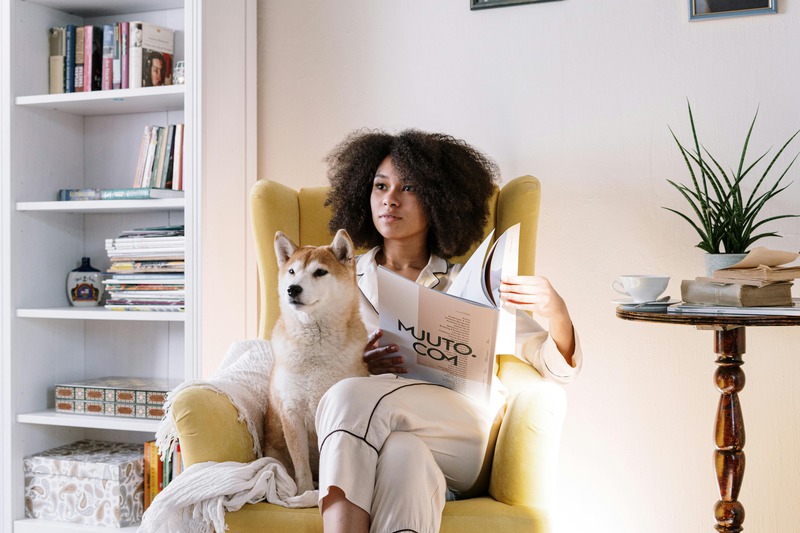Visiting the vet is a crucial part of your pet’s overall wellness. It’s the perfect opportunity to check on their health, update vaccinations, and discuss any concerns. Ensuring you’re prepared for these visits can make them smoother for you and your furry friend. Let’s explore what a typical vet visit entails so you know exactly what to expect next time you book that appointment.
Preparation for Your Pet’s Visit
Before heading out the door, make sure you’re fully prepared for your pet’s vet visit. Gathering your pet’s medical records, including any past vaccination history, medication lists, and notes on behavior changes, is a good starting point. It’s also wise to have a list of questions or concerns you want to address during the visit. Being organized helps maximize the time spent with your vet and ensures your pet receives comprehensive care.
Checking In
Upon arrival at the vet clinic, the check-in process allows the staff to confirm your pet’s information and reason for the visit. Having your pet on a leash or in a carrier, presenting a valid ID, and your pet’s insurance card helps ease this step. Your calm demeanor will also help your pet remain relaxed in the new environment.
The Waiting Room
While waiting, it’s vital to keep your pet close to you to minimize their stress and avoid interactions with other animals. Anxiety can be high in the waiting area with unfamiliar sights, sounds, and scents. If your pet is especially anxious, notify the staff – they may be able to make accommodations to help soothe your pet’s nerves.
Weight and Initial Checks
The first step inside is getting your pet’s weight and sometimes a preliminary check by a veterinary technician. They might ask about your pet’s eating habits, activity levels, and any noticeable symptoms. Be as detailed as possible; these questions help inform the vet of potential issues to explore.
Consultation with the Veterinarian
Diving into the heart of the visit, you’ll consult with the veterinarian. Here is where your preparation pays off. The vet will likely conduct a full physical examination, from nose to tail, and discuss any particular areas of concern, such as dental health, mobility issues, or unusual behaviors. Ensure your pet feels as comfortable as possible during this thorough inspection.
Discussing Vaccinations and Preventive Medications
Maintaining your pet’s health involves staying up-to-date with vaccinations and preventive care. The vet will review your pet’s vaccination history and suggest the necessary updates. They may also discuss:
-
Flea, tick, and heartworm prevention
-
Recommended dietary adjustments
-
Lifestyle-specific vaccine protocols
Keeping track of these aspects is essential for protecting your pet from common health threats.
Addressing Health Concerns and Treatment Plans
If there are any immediate health concerns, the vet will discuss diagnostic options such as blood tests or imaging. They’ll craft a treatment plan tailored to your pet’s needs, considering both immediate care and long-term management strategies. Your understanding and cooperation are key to your pet’s recovery and well-being.
Remember, keeping abreast of your pet’s health care, such as arranging procedures for them, fortifies the bond you share and contributes significantly to their quality of life. So, schedule that appointment without delay, and embrace the role of being your pet’s health advocate for years to come. There might be instances that they would need surgical interventions without you knowing; you can click here to learn more about it.
Additional Services Based on Life Stage
Depending on your pet’s age and condition, the vet may suggest additional services. For instance, senior pets might require arthritis management, while puppies and kittens might be scheduled for sterilization procedures. It is vital to consider these services at various life stages to maintain optimal health and quality of life.
Special Considerations for Aging Pets
As pets grow older, their healthcare needs evolve. When dealing with senior pets, services like hospice for dogs in Ceres may be discussed. It’s an emotional time, but knowing the options available can provide peace of mind that you’re giving your pet compassionate care in their golden years.
Wrapping Up the Visit
At the visit’s conclusion, you’ll receive any prescribed medications or products, and the staff may schedule follow-up appointments. It’s also the perfect time to settle any payments and ask for clarification on anything discussed with the vet. Leaving with a clear understanding of your pet’s health status and next steps is crucial.
Understanding Your Pet’s Aftercare
Once home, implementing the vet’s instructions is crucial to your pet’s recovery and health maintenance. Be sure to monitor your pet closely, especially if they underwent any procedures or treatments. If you have any concerns post-visit, don’t hesitate to reach out to your vet for advice.
Planning for Unforeseen Circumstances
Even with routine visits, emergencies can occur. Familiarizing yourself with an emergency pet hospital is prudent so that in case of an unexpected health issue, you know where to go for urgent care.
Final Thoughts
Routine vet visits are fundamental to your pet’s long-term health and happiness. During these check-ups, clear communication, observation, and proactive care culminate in a holistic approach to your pet’s wellness.





